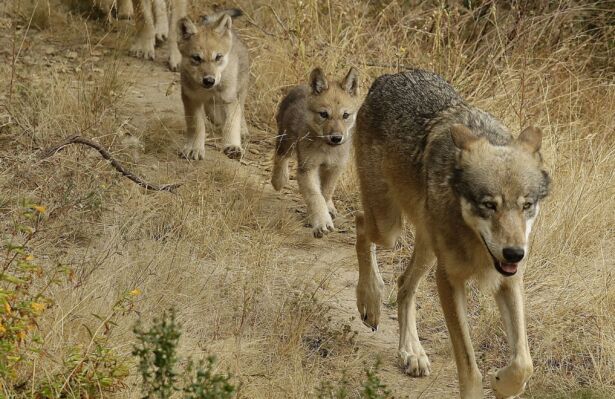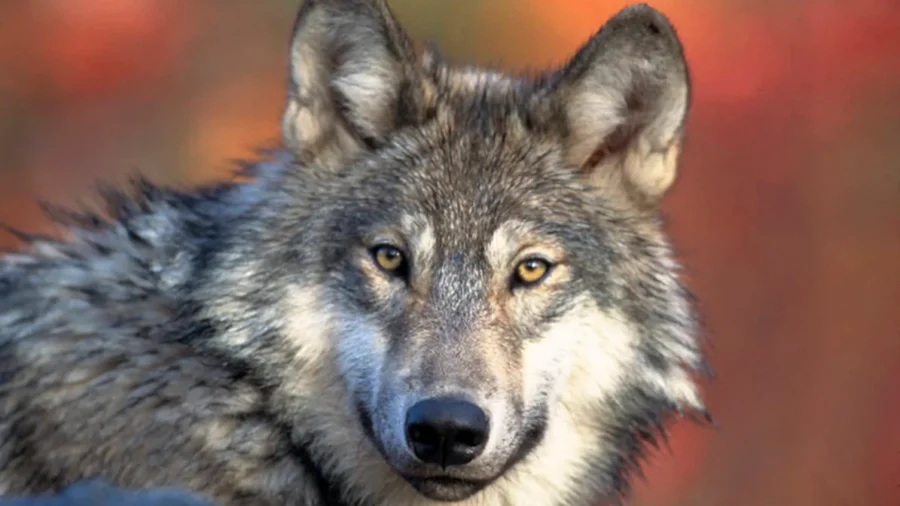The historical decimation of the gray wolf population in the Western United States has wreaked havoc on the ecosystem, a new study found.
“Various national parks in the western United States, which are considered the crown jewels of American wilderness, lack their apex predators, resulting in them being shadows of their supposed ecological integrity,” the authors stated.
According to the study, published in Bioscience, the disappearance of wolves had two immediate results that further impacted the entire ecosystems: With their main predator out of the way, large ungulates, like elk populations, spiked, which in turn impacted plant communities through overgrazing.
Similarly, smaller predators, like coyote populations, came to dominate the territory. As their numbers grew rather unfettered, so dwindled the populations of their prey: rodents, ungulates, small carnivores, birds, etc., leading to further disruption of ecological processes down the food chain, including a declining tree population.
All in all, the paper examined 96 studies conducted in 11 national parks between 1955 and 2021, the majority concerning Yellowstone, Olympic, and Wind Cave national parks. The presence of wolves and other large carnivores was only discussed in 39 of those studies.
“Most published ecological research from this region occurred after the extirpation of wolves,” lead author William Ripple said in a press statement.
“By the 1930s, wolves were largely absent from the American West, including its national parks,” he added.
As such, the exact scope of the ecological disruption caused by the absence of gray wolves remains largely unclear. What’s more, the lack of historical data could have led to faulty understandings “of plant community succession, animal community dynamics and ecosystem functions,” Mr. Ripple said.
The researchers mainly emphasized the importance of integrating historical context when conducting ecological studies, warning that “restoration decisions made without consideration of past conditions may themselves continue to alter ecosystems in novel ways.”
In addition to the loss or displacement of large predators, other factors such as fire suppression, invasion by exotic plants and animals, and overgrazing by livestock also need to be considered when researching ecologically cascading effects within national parks, said co-author Dr. Robert Beschta.
Wolves, Livestock and Protection
According to the Grey Wolf Conservation website, wolves were considered pests in the 1900s—mainly because of the ubiquitous problem that they tended to kill unprotected livestock in what was then still a largely agrarian nation.
Pressured by the livestock owners’ lobby, nationwide government policies were put in place to cull their population, which was ultimately reduced from an estimated 250 to 500 thousand to a mere 300 counted in the year 1960.

In 1974, the gray wolf became protected under the Endangered Species Act (ESA), and populations have slowly but steadily been recovering.
In October 2020, the U.S. Fish and Wildlife Service, under the Trump Administration, de-listed gray wolves from the endangered species list and returned their management and protection to the states. The decision led to Idaho passing a law calling for 90 percent of the state’s wolf population to be killed and Wisconsin to more than double its wolf-hunting quota.
A judge reversed the Fish and Wildlife Service’s decision in February 2022, restoring the federal protections for gray wolves across much of the U.S.—with the exception of Montana, Idaho, and Wyoming, owing to a 2011 congressional decision.
In April, a coalition of conservation organizations initiated legal action against the U.S. Fish and Wildlife Service and the U.S. Department of the Interior to reinstate gray wolf protections in Montana and Idaho.


